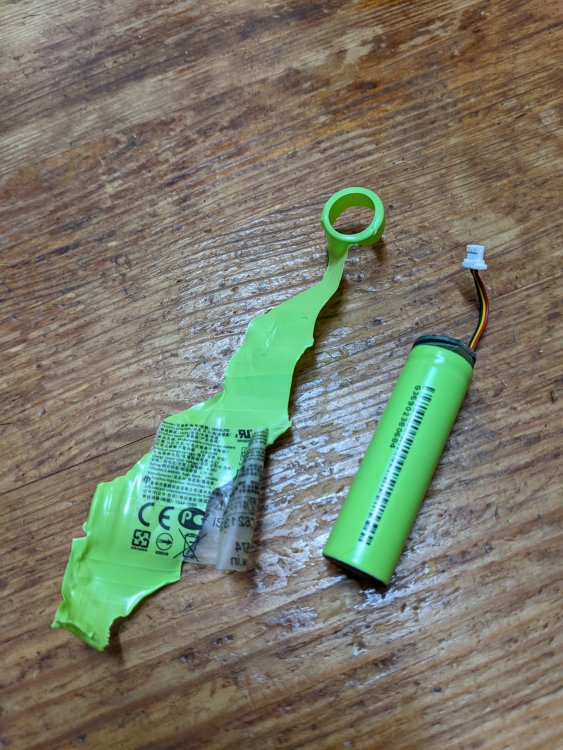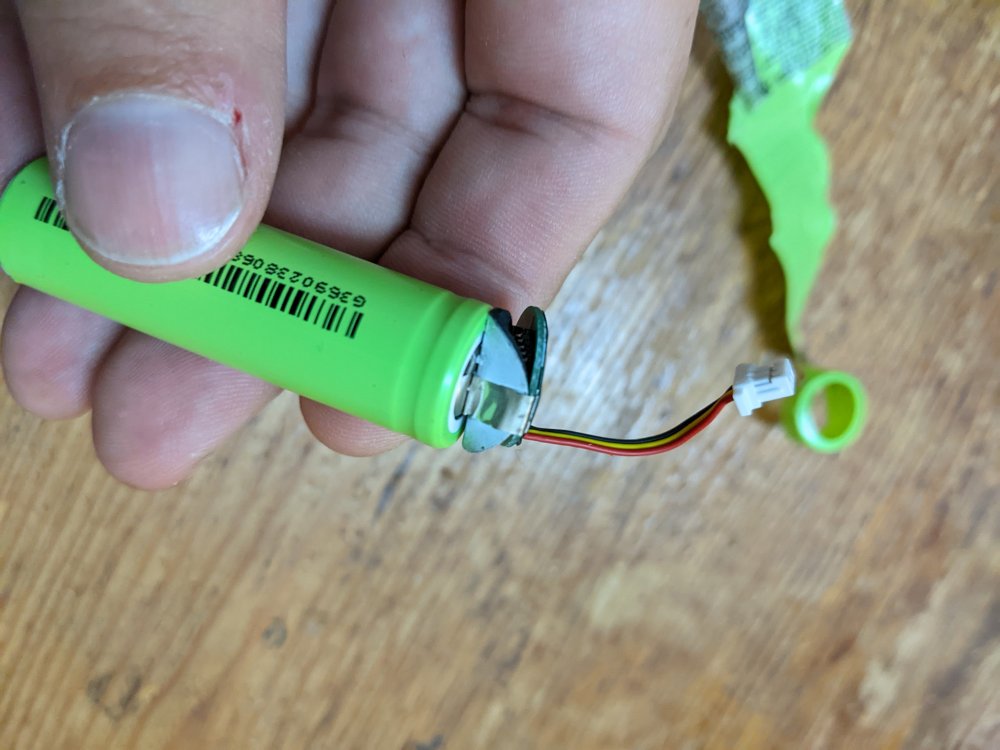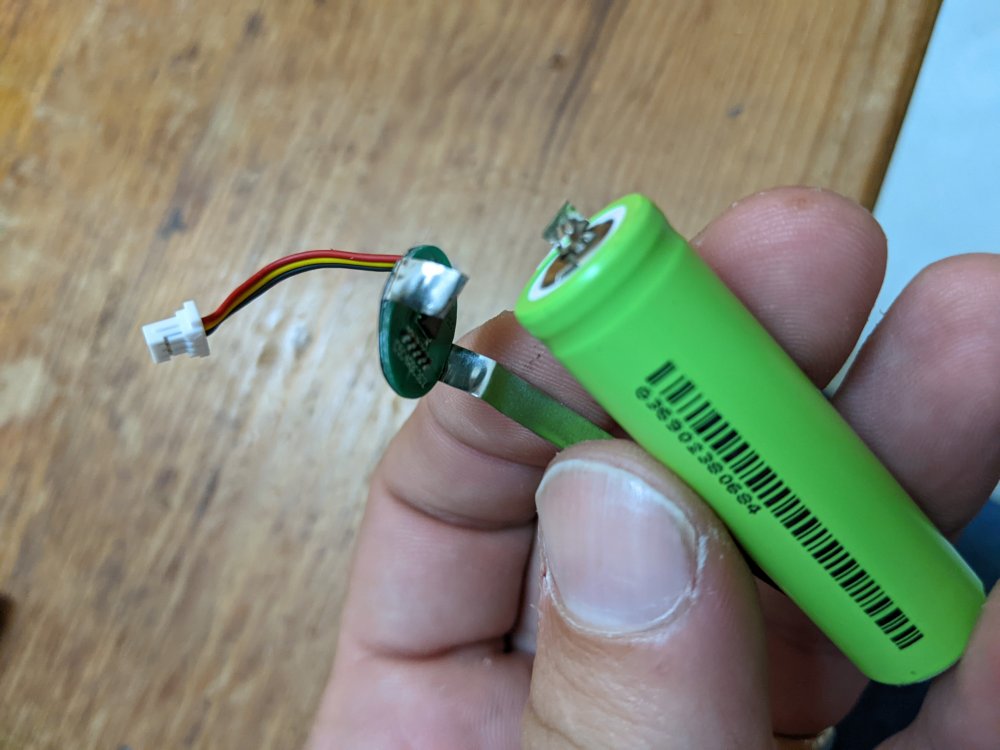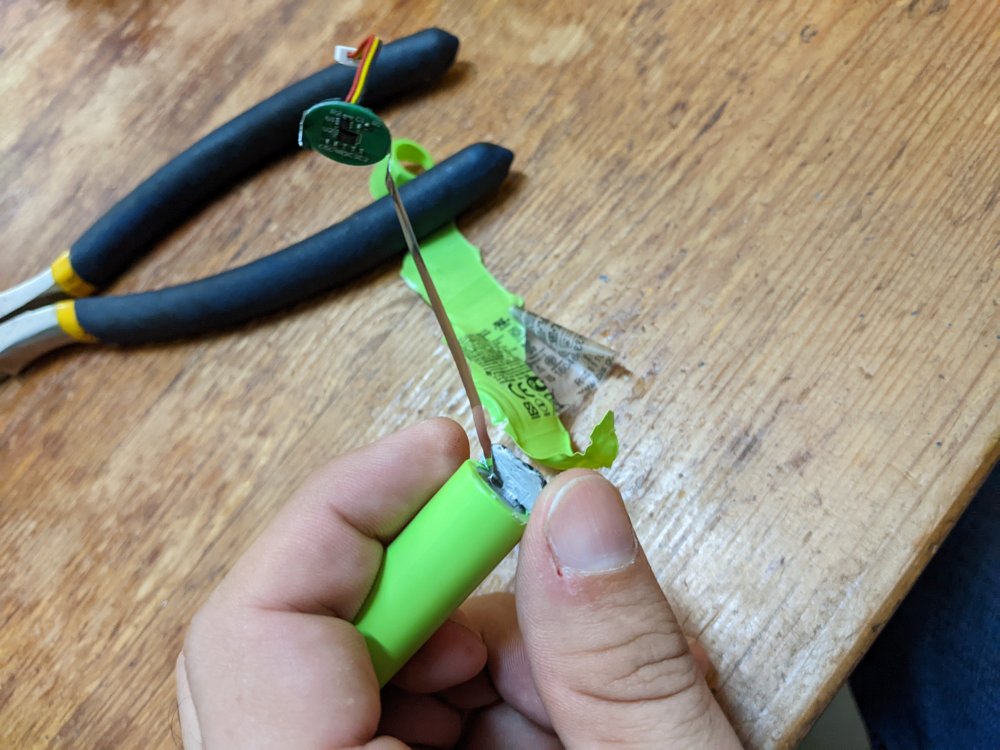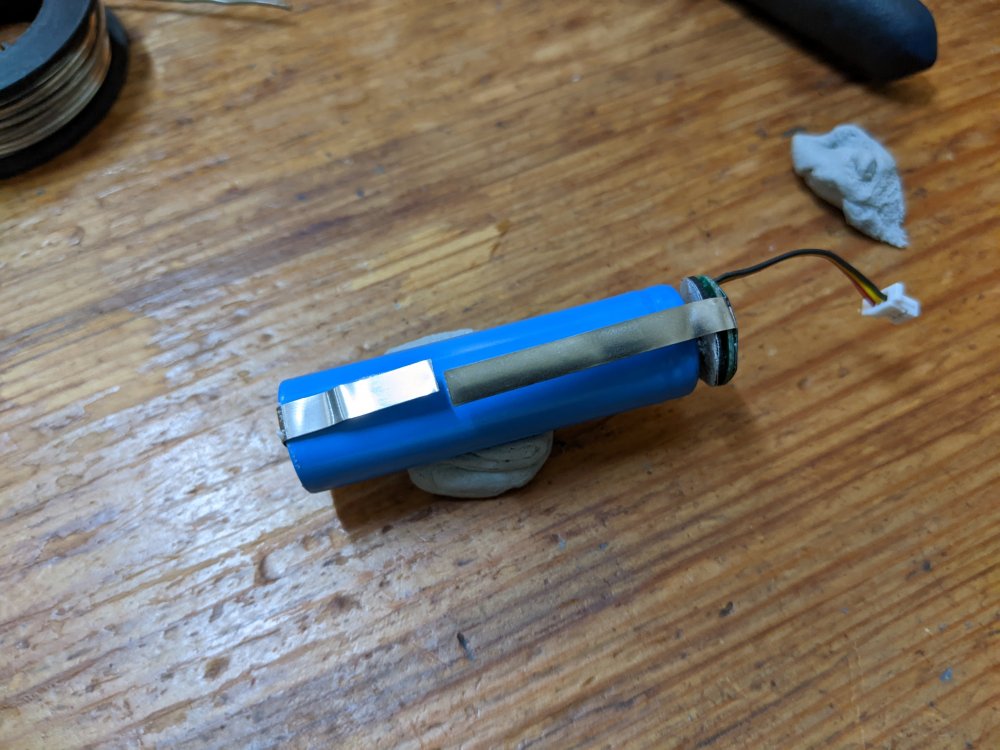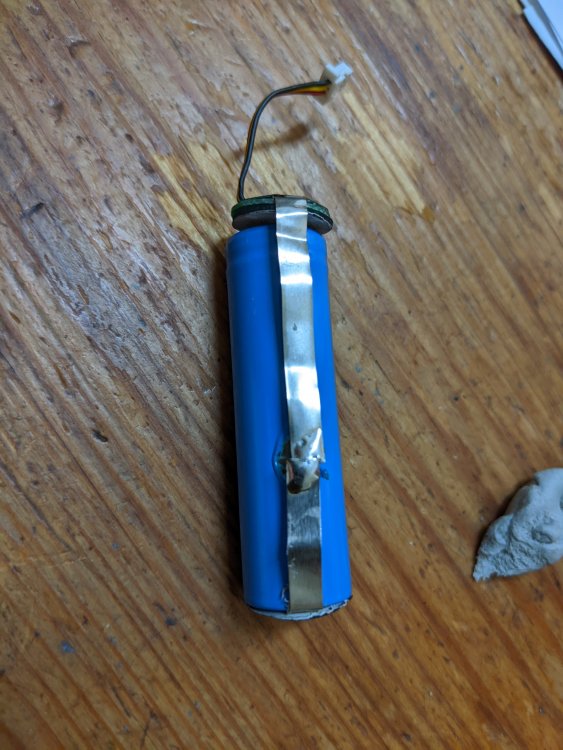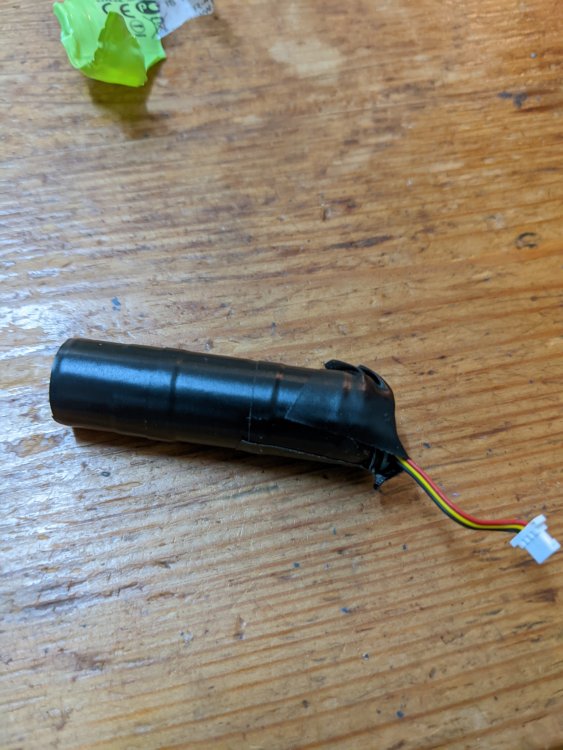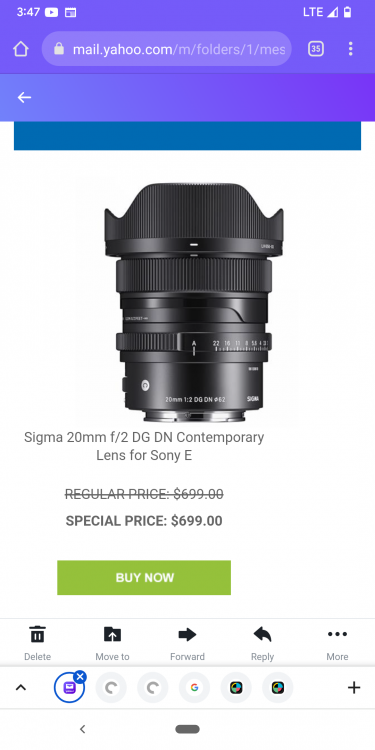Leaderboard
Popular Content
Showing content with the highest reputation on 05/10/2022 in all areas
-
SIGMA FP with ProRes RAW and BRAW !
webrunner5 and 3 others reacted to Llaasseerr for a topic
Just a note IMO about linear Raw vs Log encoding. Let's keep in mind that log encoding was developed by Kodak for Cineon scanning of film negative, and is basically what was passed on to digital cameras. It's not an inferior image encoding method developed for hybrid 4k mirrorless cameras. The LogC encoding on the Alexa is probably the most prominent log curve for a digital camera to be very close to Cineon, and Red and Sony eventually capitulated to that. It's not inferior to linear raw, unless the individual log curve implementation by that camera manufacturer is left wanting. It's a more efficient encoding of highlights and shadows because it gives less code values to highlights, rather than half of a linear image for the brightest stop. It also allocates more code values to the shadows than linear raw. I would rather take 12 bit log ProRes RAW from the Sony cams/Ninja V than 12 bit linear DNGs, but obviously that's a much more expensive solution than the fp - like 5x the price. The reason that log footage is often inferior in the prosumer cams is because it's probably chroma subsampled, denoised and DCT compressed. ProRes 4444 log from the Alexa Classic is a thing of wonder though. If you apply the inverse transform of the log encoding curve, then your image is back in linear space and if you factor out the ways the image has been decimated, then it is very close to an original raw recording.4 points -
I used a Leica CL with a 40mm for a long time for stills and the Sigma FP comes really close to that idea of minimalism. I think the FP is very convenient. And I haven't actually come across any aliasing in practice with the 4K DNG vs the URSA Mini 4.6K where I have it in the test scene (showing on the URSA on the color checker) when I compared the two cameras. The FP is very clean and vibrant. I bought SmallRig accessories, cage, rail adapter, and ssd holder and a top handle when I need to adapt the Sigma FP into a larger setup, but also just using it bare bones with the EF adapter and an Canon IS lens has really been smooth. I've remapped the False Color to the 'AEL' button on the back as well as the 'Mode' button to ISO and 'Tone' to Peaking. Then with the aperture / shutter dials enabled in cinema I can bump around exposure. I have a few Hoya Pro NDs and a magnetic adapter ring. I have a Canon 5DS for stills and while the colors are slightly different out of the box I don't have any issues trying to match it if that's what's needed. And the post workflow is honestly very quick if you drop into a DaVinci Color Managed or ACES project and not any different really than taking the stills to Lightroom / Photoshop Camera Raw or Capture One. I don't expect it to be an Alexa, but I think there is plenty of runway in the files for any kind of imagery you want to make with it.2 points
-
@kye lol🤣 Of course that "bug machine" wasn't for the bugs, but a fog machine to make it all pretty on camera. Quite common on sets. Never yet caused the Empire to show up!! Although years ago I was working on the lighting department for a music video, and we got a few fire engine trucks show up because they believed there was a real fire in the bush which they needed to respond to 🚒 🔥🔥🔥2 points
-
SIGMA FP with ProRes RAW and BRAW !
webrunner5 reacted to HockeyFan12 for a topic
I guess to me the S1 is the ultimate in on set convenience and the Alexa is the ultimate in convenience in post. Increasingly I feel like I should have gone for the middle ground for both (P4K and speed booster XL) and left it at that but the last thing I need is to invest more money and time in another camera system. Were I starting over I think I'd go for a P4K, speed booster XL, and a LOT of old Nikkors. But I'm not sure I'm starting over. So I don't really know.1 point -
By the way I tested the ARRI against the Sigma in a mixed lighting condition. Lit myself with a blue light on one side and and orange light over head. I was really pleased how close it looked to the Alexa after adjusting WB, tint, and contrast. Its really too bad all the cheaper cameras have crap focus peaking and terrible laggy HDMI out. The image quality is there but the practical usability on set isn't. But hey still pretty cool to have something like this for a little over a thousand bucks. I am sure this was already posted but maybe worthy of posting again. Really nice imagery imo1 point
-
@TomTheDP In addition to the above, and I don't know if it's related to DR or not, but the more modern cameras seem to have much better behaviour in their under/over exposure tests. I had the impression on older cameras that when you went under/over significantly that colour shifts and strange / unpleasant behaviour crept in before clipping or noise, whereas now most cameras seem to have only very subtle colour shifts right up until they clip or get overtaken by noise. Maybe I'm getting that wrong, but the DR that exists between noise and clipping is far less relevant if the usable DR between strange colour shifts the dominant restriction.1 point
-
Living on the west coast and having the beach as a convenient test location, I shoot a lot of sunsets, and my experience with the BM OG Pocket and BMMCC are that there's enough DR to just clip a round section just near the sun and still get shaded skin tones usable (to my tastes anyway). I have no idea if they were exposed "properly" at the right levels, or if they were one (or more) stops under, but the IQ seemed perfectly acceptable. I know the BMMCC is still relatively good in terms of DR compared to all but the current generation of cameras, but with those the exposure challenge is even easier to deal with. I notice really huge differences in practical DR when comparing the GH5 709 modes (that don't have the full DR of the GH5) with the HLG mode (which does - all 9.7 / 10.8 stops of it) and the OG BM cameras with their 11.2 / 12.5 stops. Another stop or two more would obviously be beneficial above those but I think the point at which you're choosing what to be able to include in the shot (ie, what is usable and what isn't) has probably passed for most people, even with the sun in frame.1 point
-
Without a doubt. I would assume that as long as you can see a little detail in the clouds, you should be good to go.1 point
-
@IronFilm - great pics but man... what a ride that was!! "we were out in the forrest just minding our own business and playing with cameras" "the bugs were getting annoying so we used some spray" "then out of nowhere the freaking empire showed up!" "It was at least 6 to 1, but those guys are SCARY... he said our bug spray needed a permit and that if we didn't have one, he'd KILL us" "we didn't know what to do.. we didn't have a permit, and the guy was completely nuts, so we mostly just avoided eye contact and tried to let the situation calm down" "he eventually left, probably to go kill more innocent people on a picnic or something, just gave us the evil eye before he left. psychopath!"1 point
-
Yeah shooting outside at least you can't go wrong protecting your highlights unless maybe you are shooting a subject with the sun behind them but no camera will really handle that perfectly.1 point
-
SIGMA FP with ProRes RAW and BRAW !
webrunner5 reacted to mercer for a topic
Yup, more than likely, the meter inconsistency is consistent, so with ND, VND and/or exposure compensation, it should be fairly straightforward to get consistent results. I agree that ETTR isn't optimal, but as you know, a 12bit raw image should give you a lot of leeway in Resolve's Raw Panel. To add to your greater point... I think I would use the FP as simple as possible... I'd probably monitor it with the Monochrome profile, use the in camera, center weighted meter, run some tests and adjust accordingly. I'd also use a wide angle lens that vignettes a little to take the edge off the highlights, or add a slight vignette in post to soften the highlights when needed. With my 5D3, I can't even review clips, so the FP seems like a luxury to me in a lot of ways. Btw, the Digital Bolex is one of my dream cameras. It must be great to have one.1 point -

SIGMA FP with ProRes RAW and BRAW !
OleB reacted to webrunner5 for a topic
I think most people on here, including me, would sacrifice the darker areas for the highlights. YOU have to determine what is your priority in each scene. What makes you happy is what counts. It is your footage. Sure, if you are in a studio you can add or subtract lighting but out in the wild it is rarely a perfect scenario for a great exposure. That is why video is so damn hard to do well.1 point -

SIGMA FP with ProRes RAW and BRAW !
Llaasseerr reacted to Ryan Earl for a topic
This might be too dirty of a comparison, but the earlier posts concerning the chart have been helpful when looking at my images so I though I would post it anyway. I pulled these from ACES versions of my two images. I blocked the Adobe Standard Profile from hyalinejim on the far right and the initial one from Llaasseerr on the far left.1 point -
SIGMA FP with ProRes RAW and BRAW !
OleB reacted to Llaasseerr for a topic
OK I re-read what you're saying and I think I misunderstood you in my initial reply. I'm not looking to measure from the noise floor up, although yes that's a good point that there will sort of only be 12.5 stops available from there. Although I think it's subjective and that the camera companies except Arri and maybe Red are quite obsessed with images with clean shadows and low noise. I'm looking to push the highlights as much as possible, then look at the noise and see if I can live with the way it looks as I push that 12.5 stop range up. Obviously this is difficult because on a linear scale on the sensor, the shadows are already compressed into a tiny range compared to the highlights due to the brightest stop taking up half the sensor's available range (due to the doubling of light). And I'm proposing pushing the shadows into an even smaller allocation at the low end. But these sensors are just so sensitive to low light, that I'm okay doing that.1 point -
SIGMA FP with ProRes RAW and BRAW !
Zeng reacted to Llaasseerr for a topic
If I understand you, you're saying what if you don't need to catch very bright highlights? I'm a bit of a fetishist for stops over middle grey, where I like to capturing the highlights of naked practical sources, specular highlights etc. But if they're not needed for the subject matter then it's overkill. I'm just interested to see what can be captured in what I would consider to be a great many cases, and I don't mind a somewhat raised noise floor if it looks natural. Like you said, when the highlights clip, they clip whereas it's more subjective with the low end and it also depends on the look you like.1 point -

SIGMA FP with ProRes RAW and BRAW !
Llaasseerr reacted to webrunner5 for a topic
I was going to say just buy a Sony Alpha camera but didn't lol. Even the original Canon R would be ok. I get the idea of DNG files. You make it happen not the camera. Cameras that do that are great as a learning tool. Not so great for getting what you want on a daily basis. I would not mind having one to be honest. But I can think of a Lot of "better" cameras for my use than it for the same or near money. I am tired of spending my time going somewhere, long drive to get some footage and it is crap when you look at it back home. Wow not a good way to spend your time. But I guess if you shoot Raw you can fix a lot of F ups. I guess I have been there done that too many times to consider it to be honest. We have come to a point in time where most newer cameras now are a Lot smarter than we are.1 point -
SIGMA FP with ProRes RAW and BRAW !
Noli reacted to Llaasseerr for a topic
You're right, they are defined and that's what allows us to transform in and out of them to other colour spaces. It's not like we have to work in linear floating point in ACES gamut, Rec2020 or Alexa wide gamut, but to me working in ACES is a kind of lingua franca where the mathematics behave in a simple predictable way that is the same as the way exposure works in the real world. And under the hood, the Resolve colour corrections are still applied in a log space (ACEScc or ACEScct). I'm not saying it's perfect, but it makes a lot of sense to me. The caveat though is that more often than not, an image that is represented as sRGB or Rec709 has had a linear dynamic range compressed into the 0-1 range not just by doing a transform from linear to sRGB or linear to Rec709, because that would cut out a lot of highlights. So there's some form of highlight rolloff - but what did they do? In addition, they probably apply an s-curve - what did they do? Arri publishes their logC to Rec709 transform which is via their K1S1 look, so this is knowable. But if you transform logC to Rec709 with the CST it will do a pure mathematical transform based on the log curve to the Rec709 curve and it will look different. So basically, to say an image is sRGB or Rec709 isn't accounting for the secret sauce that the manufacturer is adding to their jpeg output to most pleasingly, in their mind, shove the linear gamma/native wide gamut sensor data into the "most pleasing" sRGB or Rec709 container. Sorry if you knew all that, I'm not trying to be didactic. Just as a side note, Sigma apparently didn't do this with the OFF profile, which is both helpful and not helpful (see below). I stated before, that the work Adobe did with CinemaDNG and the way a tool like Resolve and a few more specialized command line tools like oiiotool and rawtoaces interpret the DNG metadata, is based around capturing and then interpreting a linear raw image as a linear-to-light scene referred floating point image that preserves the entirety of the dynamic range and the sensor wide gamut in a demosaiced rgb image. Not that Cinema DNG is perfect, but its aim is noble enough. What you're describing with shooting a chart and devising a profile is what the DNG metadata tags are meant to contain courtesy of the manufacturer (not Adobe), which is why it's a pragmatic option for an ACES input transform in absence of the more expensive and technically involved idea of creating an IDT based on measured spectral sensitive data. If you look in the DNG spec under Camera Profiles it lays out the tags that are measured and supplied by the manufacturer. Separate from that is the additional sauce employed in the name of aesthetics in Lightroom, and above I described the process by which the manufacturers add a look to their internal jpegs or baked Rec709 movies. And what does it matter if there's something extra that makes the photos look good? Well I'd rather have a clean imaging pipeline where I can put in knowable transforms so that I can come up with my own workflow, when Sigma have kind of fucked up on that count. What I will say about sigma's OFF profile that was introduced after feedback, is that as best I can tell, they just put a Rec709 curve/gamut on their DNG image almost as malicious compliance, but they didn't tell us exactly what they did. I mean in this case, they did not do any highlight rolloff, which in some ways is good because it's more transparent how to match it to the DNG images, but also unlike a log curve the highlights are lost. So the most I've been able to deduce is that by inverting a Rec709 curve into ACES that I get a reasonable match to the linear DNG viewed through ACES, but with clipped highlights. But for viewing and exposing the mid range, it's usable to get a reasonable match - ideally with another monitoring LUT applied on top of it for the final transform closer to what you would see in Resolve. And I absolutely don't want to say that we all must be using these mid-range cameras like we're working on a big budget cg movie, thus sucking the joy out of it. But like it or not, a lot of the concepts in previously eye-wateringly expensive and esoteric film colour pipelines have filtered down to affordable cameras, mainly through things like log encoding and wide gamut, as well as software like Resolve. But the requisite knowledge has not been passed down as well, as to how to use these tools in the way they were designed. So it has created a huge online cottage industry out of false assumptions. Referring back to the OG authors and current maintainers pushing the high end space forward can go a long way to personal empowerment as to what you can get out of an affordable camera.1 point -

The Thread for Good Deals and Discounts
HockeyFan12 reacted to homestar_kevin for a topic
Someone shared this on dpreview m43's forum, I couldn't resist. I have m43 to Sony E and Nikon Z adapters, so plan on using these adapted to FF. Adorama back at it again with some Samyang/Rokinon price craziness, this time in the m43 mount I thought $230 was low for the 24mm 1.5 last year, now it's at $150! They have most focal lengths and some kits available. The 135mm 2.2 is $140, the 50mm is $130 The 24mm, 35mm, 85mm kit is $350! https://www.adorama.com/l/Video/Video-Lenses-and-Accessories/Samyang~Digital-Cinema-Lenses?sel=Lens-Mount_Micro-Four-Thirds1 point -
Hi Folks, I see a recurring question here on the opening of the module. In short, it isn't hard. You basically have to pry it apart along the seam. Some will use a guitar pick, but I happened to have a 1" square of metal (you might have it too... it came with a magnetic phone mount, the metal that sticks to the phone) that was thin and able to get in there to pry and pop it open. I see some people have asked about a larger capacity battery, and while that is certainly possible, I wasn't able to find one. I just replaced it with another 800mah 14500 3.7v battery I found at the local electronics store. MAKE SURE IT HAS SOLDERABLE ENDS ON IT!! Once you pop the top, you've got to pull the circuit board out and disconnect the two connectors. The battery is held in place with some double sided tape on the underside that you can't see, but you'll need a small screwdriver or something to pry it out. Next step is to take the plastic wrapper off to expose the connections. (see my first picture) Then on the top side of the battery, peel the black cover back (it's under the little circuit board) to expose the top battery connector. Cut that silver strip. (see picture 3) You do the same thing on the bottom of the battery. Basically at this point you've got to pay attention to how long the solderable lead is that is on your replacement battery. Mine was about an inch long, so I didn't end up cutting the connector at the very bottom. You can see how I trimmed it in picture 5. Once those two connectors are cut, you move the unit you just cut off onto your new battery. In picture 6 I've soldered that connector that goes down the side of the battery. Do the same thing on the top. Once you've soldered it up, wrap the battery back up with some electrical tape and you're good to go!1 point
-
It's definitely tilted towards the needs of the professional user over the casual enthusiast I would say. Features like DR Boost, ProRes internal, and compulsory 4-channel audio (you can't take a stereo track into post as far as I can see), potentially make life better for the dedicated pro, but probably more fiddly for the enthusiastic amateur. Full V-log curve seems to be a bit of a gimmick as you're not able to stretch the DR past what V Log L would have allowed from what I can calculate (admittedly not my area of expertise). V Log highlight clipping occurs around 88 IRE (compared to 82 for V Log L, and 109 for full V Log range). That said, as previously mentioned, DR Boost is definitely worthwhile, and gives the crucial little bit of DR I've been crying out for with this series. It doesn't turn the camera into a dreamy DR monster, but it does take the edge off of that burnt-out DSLR look, and seems to help both highlights and shadows. I don't want to oversell it, because it really just adds a touch of latitude rather than a major transformation, but its a very useful addition in my book. What is also fantastic is full V-Log gamut, which seems to be providing much richer, more natural and accurate colours. I'm really enjoying shooting with it. I think that if you're not going to be using V Log you've got some problems though. DR looks much reduced, and from looking at online tests it looks like it may be even worse than the GH5! That's not good news really. Is there any point in using Linear DR+ mode when V Log (with DR+ Off) offers greater dynamic range? I'm really pleased with my camera so far. It's familiar enough that I'm getting some muscle-memory imbedded straight away, but progressive enough that its challenging me in some interesting new ways. As well as the obvious headline features, one thing that really strikes me is that Panasonic have really sat down and thought about how to make this camera better from top to bottom. Some innovations I really like are: Improved Custom Modes. You can now save 13 Custom Modes (and crucially give them names that come up on the screen when you turn the dial). That's up from 5 (un-nameable) on the GH5 if memory serves correctly. Same topic, but you can now choose how the custom modes respond to shutdown/sleep, etc., even to the point of excluding certain values. This is massive because the previous CM system was practically unusable due to the way it kept resetting exposure values 😖. There's a lock switch, and again, you can dial in exactly what you want it to lock and not to lock. I'm using it just to protect my shutter angle dial. Hallelujah! You can use 4-channel recording in conjunction with the (separate accessory) XLR input and the minijack socket. You can now (I think) use this setup to patch a safety channel from the XLR, which you annoyingly couldn't do before (despite the availability of the stereo channels). The exposure tools are improved. There's a nice luminance spot-meter which works well (though they want you to switch your thinking from IRE values to stop values when shooting log, which I'm finding a bit of an adjustment). The waveform is now bigger and actually useable (though it has no value scale). The camera is palpably heavier, which is helping me to get steadier footage when going handheld (along with the excellent IBIS of course), but I appreciate this will be a negative factor for some. You can get a surprising amount of functionality with the old GH5/GH4 batteries. I can't remember the exact limitations, but basically you just can't record in the super-duper modes (5.7K, 800Mbps and above, ProRes, etc.), but everything else works fine. I expected the limitation to be much more than that. I can see certain people just sticking with their existing batteries to be honest. The restrictions are similar (possibly identical) to those between V60 and V90 card recommendations from what I recall. The battery lock tab (inside the battery enclosure) is now white instead of black so you can easily locate it in the dark. Admittedly this is not a significant feature in any way, shape or form, but I'm really happy to see it because it tells me that somebody has been going over every inch of this camera series and trying to find incremental ways to improve it. Some things I'm not so keen on - The whole 2000 ISO or bust thing. It seems to me that if you are going to buy this camera, the top end DR improvement is one of the biggest draws. You will have to develop a new ND strategy to use it freely. To be honest it hasn't been the nightmare I was anticipating. I love the DR Boost mode image output, so I might just adjust my thinking and continue to operate at ISO 2000. It's nice for low-light in any case. Battery life, which used to be the strength of this series (GH4 💪) is now distinctly meh. But I guess that's just the price you pay for IBIS, Dual Gain sensor, fan, etc. I've only just started to get to know this camera. I haven't tested any of the high speed modes (look fantastic online!) or photo features (ditto). Overall , I'm really pleased with it. Coming from the GH5S, the improved image quality (I was already happy with the GH5S to be honest) and addition of IBIS is an absolute killer already. It doesn't lag too far behind the GH5S for low-light either, seeming totally useable up to 4000 ISO (VL DR+), which is more than enough for me.1 point
-
Thanks for your reply - very useful, and also heartening that it's not the footage that is the challenge but the camera itself. I'm also further heartened that it seems the challenges are just in working out the camera rather than challenges that come up shoot to shoot (like fiddly buttons or confusing menus etc). I've done many (many...) of these types of tests in the past to learn to get the most from the GH5 (and other cameras). I've shot test scenes in different modes, uploaded to YT, downloaded back from YT at different resolutions and then studied the resulting images to see what is visible at the end of the whole pipeline and what is not (4K vs 1080p source material is essentially imperceptibly different when uploaded to YT at the same bitrate/resolution). etc etc. This means that those considerations are, for me at least, kind of inconsequential. I'd do some tests, evaluate my options, and then just work out my rules for shooting. On first glance, and knowing what I know about lighting levels (which I've talked about in another thread) I'd be tempted to have DR+ on all the time, have a fixed ND that I put on when outside during day, and then just let it expose with auto-ISO. I tend to shoot with aperture only varying a few stops anyway, so that sort-of doesn't factor in that much. Every time 100 people say "FF" on an MFT thread, one less review gets published. We're voting with every comment, and most people are voting against themselves. Go back in this thread and re-read the last 10-20 pages - you'll be left with the distinct impression that no-one is in the market for this camera and that AF has killed MFT. It might not be true, but it's how it sounds with all the moronic comments that people make.1 point
-

Olympus OM-1
billdoubleu reacted to Andrew Reid for a topic
After a little more testing it is apparent that the phase-detect AF is flat out amazing for video on the OM-1. Really nothing like the GH6. Really natural movement to handheld shots with the IBIS as well. Especially as you can tune it. High setting for a locked down shot and -1 when you want more fluid movement. Just trying to figure out of the battery is identical to the one in my Sony A7 IV. Feels like there is a LOT of Sony about the OM-1. Feels like a buy-out by proxy!1 point -
The Thread for Good Deals and Discounts
Rinad Amir reacted to Thomas Hill for a topic
1 point




